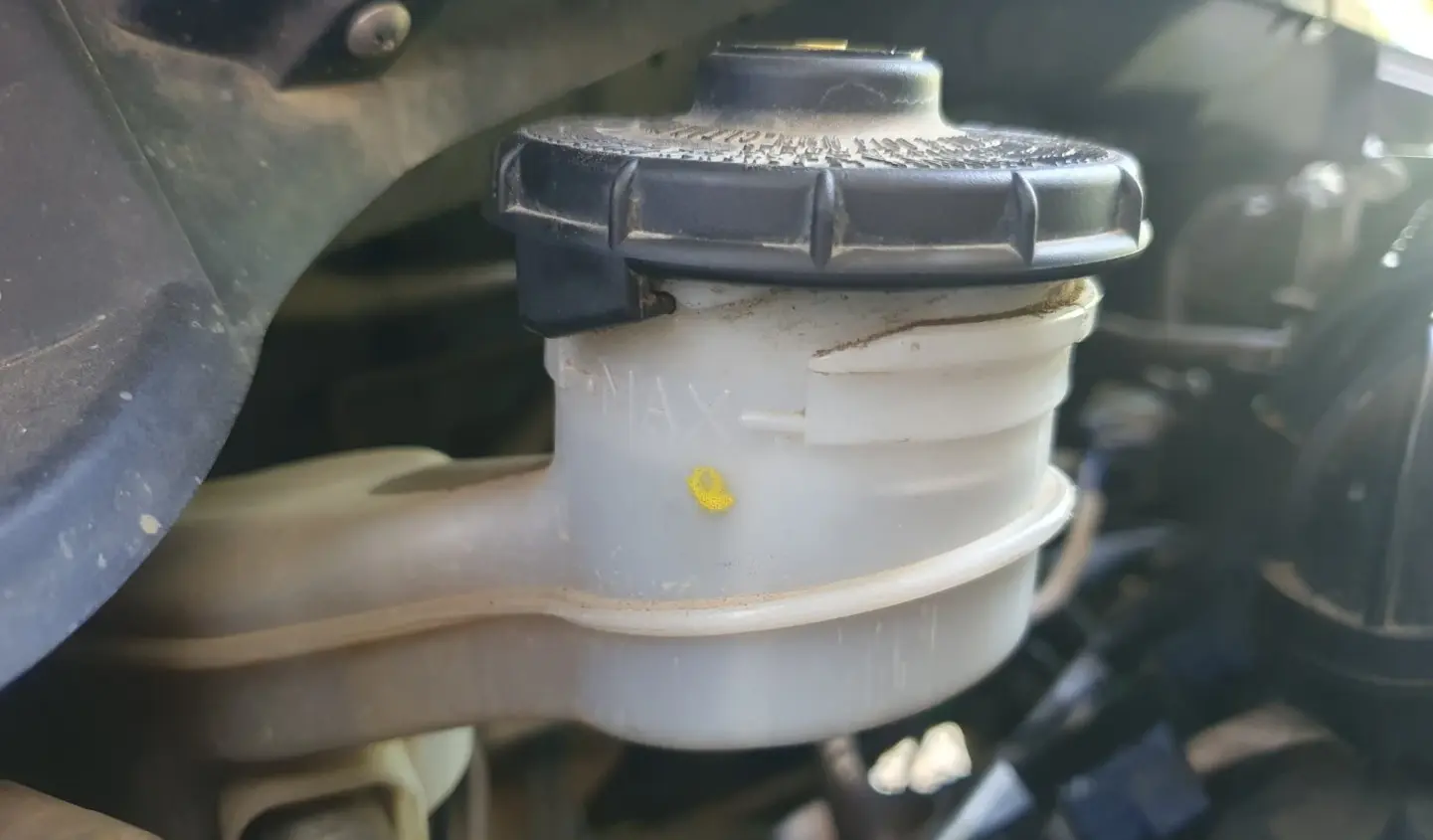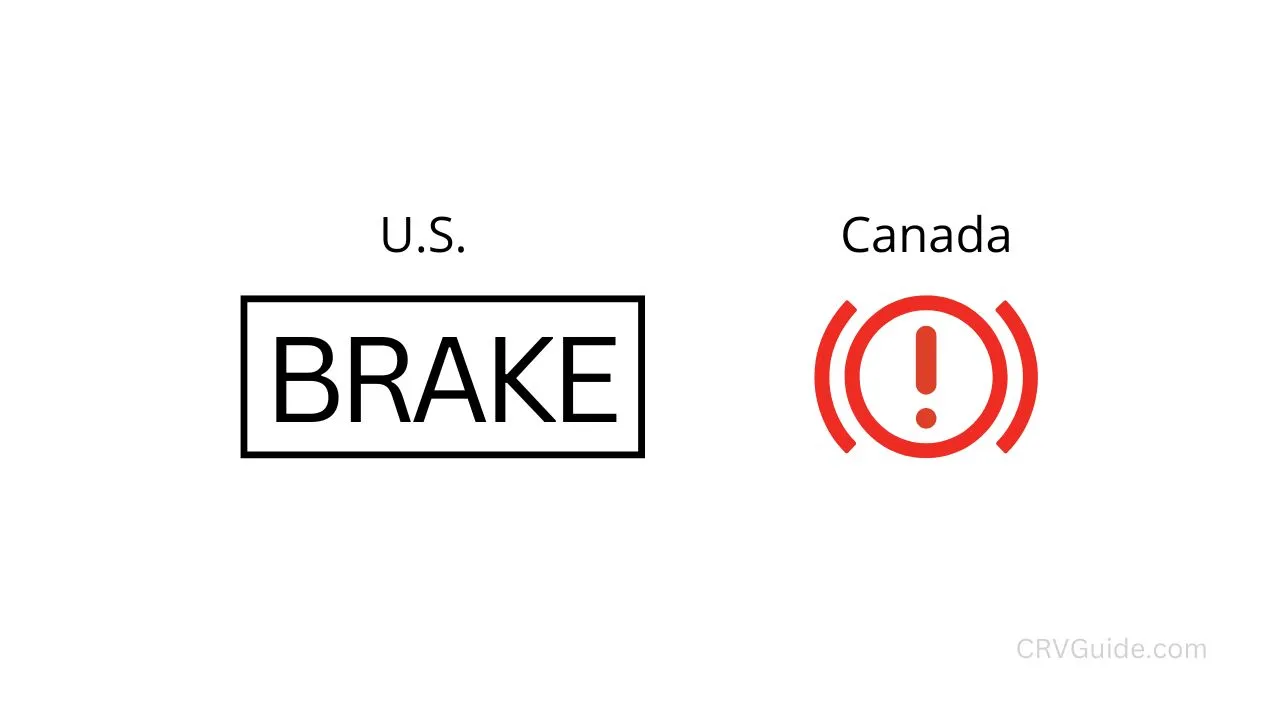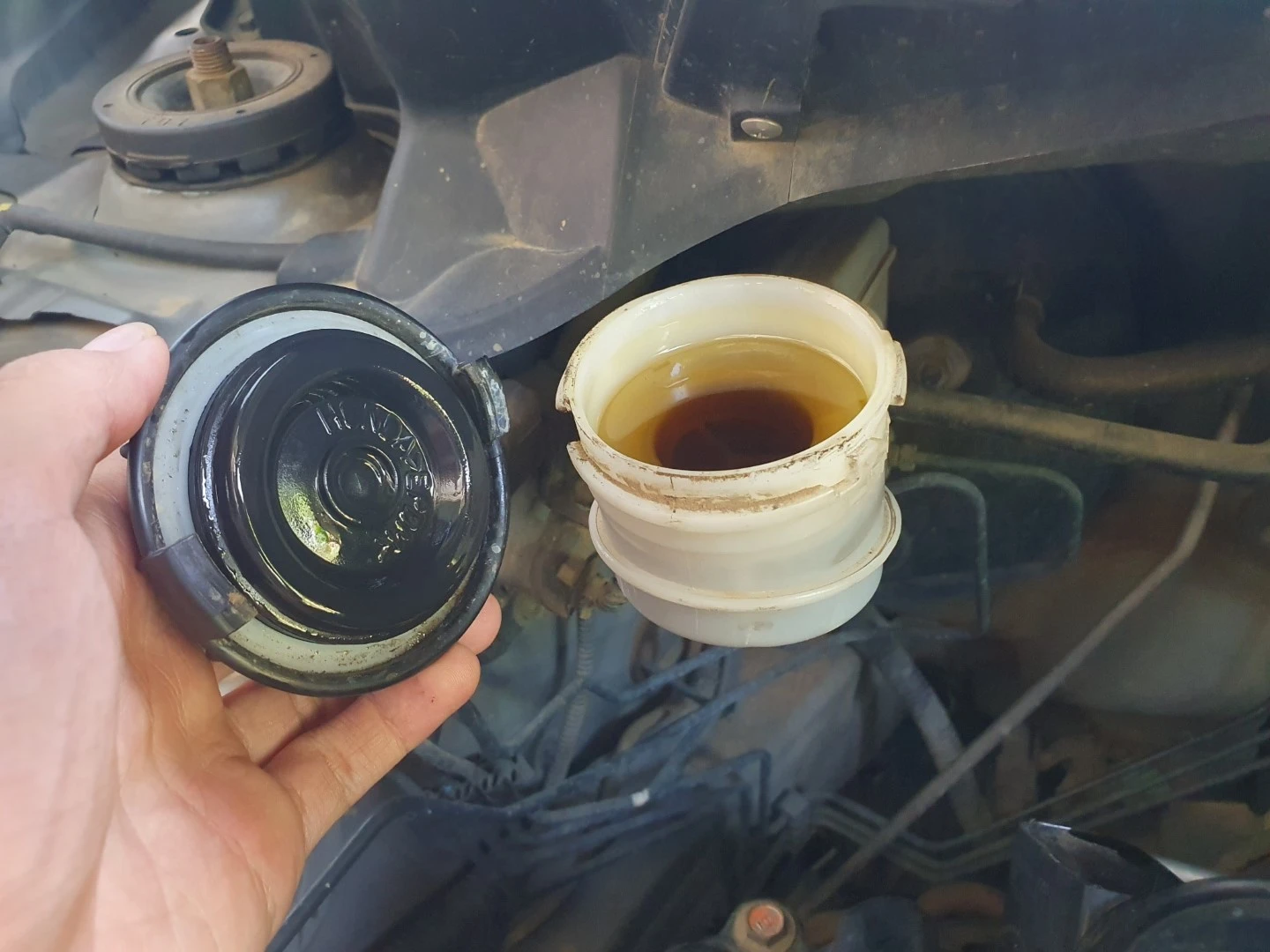Honda CR-V Brake Fluid Guide (All Models)
Brake fluid is a crucial component of your car’s braking system. It transmits and amplifies the force from your foot on the pedal, enabling the car to slow down or stop easily.
Due to various factors, brake fluid can become less effective and dirty over time. To maintain proper braking function, it is essential to replace the brake fluid regularly, using the type specified by the car manufacturer.
This short guide covers the basics of changing the brake fluid in your CR-V.

Honda CR-V Brake Fluid Type
All Honda CR-Vs, regardless of the model year, are compatible with the following brake fluid:
- FMVSS116 DOT 3
- FMVSS116 DOT 4
The main differences between DOT 3 and DOT 4 brake fluid are their boiling points and water absorption rates.
DOT 3 brake fluid absorbs less water than DOT 4. This means you will need to change DOT 3 brake fluid less often. However, DOT 4 brake fluid has its own advantage. It has a higher boiling point (up to 230°C) than DOT 3, which has a boiling point of around 205°C.
This higher boiling point makes DOT 4 brake fluid more suitable for demanding applications such as towing, high-performance braking, and larger vehicles that perform heavy braking.
A lot of information suggests that you can mix these two types of brake fluid, but you should not. An improper mixture of brake fluid can cause brake malfunction, which is very dangerous.
It would be best if you stuck to the specifications recommended by the manufacturer. If you’re unsure which brake fluid to choose for your car, contact a repair shop or a professional.
How often should brake fluid be changed?
As mentioned above, brake fluid should be checked and replaced on time to keep the brakes functioning properly. Here’s how to know when to change your brake fluid.
Honda recommends checking the brake fluid every six months or 5,000 miles. If the fluid is low, it needs to be topped up. However, if it looks dirty, as seen from severe discoloration, it needs to be flushed and replaced completely.
Fresh brake fluid is almost transparent, with only a slight yellow tint. However, similar to engine oil, brake fluid will change color with use. If the brake fluid is already dark brown or even black, it should be replaced immediately.
Honda recommends flushing and replacing the brake fluid every three years, regardless of whether the color has changed. Usually, the Maintenance Minder system will display a notification in the form of “B SERVICE” on the information display to remind you.
When the brake fluid level is low, you will also see the brake system indicator come on.

The brake system indicator normally comes on when you turn the ignition switch to the ON position, reminding you to check the parking brake. It will stay on if you do not fully release the parking brake.
If the brake system indicator comes on while driving, the brake fluid level is probably low. Press lightly on the brake pedal to see if it feels normal. If it does, check the brake fluid level the next time you stop at a service station. However, if the brake pedal does not feel normal, you should take immediate action.
(2024 Honda CR-V Owner’s Manual)
Ignoring the condition of the brake fluid can have disastrous consequences. Poor brake fluid can cause the brakes to become “soft”, meaning they no longer provide the proper pressure. This is very dangerous, but you can prevent this from happening with a little effort.
How to Check The Fluid Level
Here’s a step-by-step guide on how to check the brake fluid level. It’s pretty easy, and I’m sure everyone can do it.
- Pop the hood of your car
- Find the CR-V brake fluid reservoir, usually located at the top rear of the engine, near the hood hinge
- Look at where the level falls on the outside of the container. You will see two marks on the container, Min and Max. You want to make sure that the liquid level is between these marks.
If you don’t see the fluid level when looking at the reservoir, it may be because the fluid is very low or the container is dirty, making the fluid inside not visible.
Take a damp cloth or paper towel and wipe down the reservoir thoroughly. This will make it easier for you to see the fluid level.
As I mentioned earlier, if you find the fluid level is below the minimum limit, you should top it up as soon as possible.
Cost To Replace

The cost of a brake fluid change on your CR-V depends on where you seek this service. As always, official dealerships tend to charge higher prices than independent shops for the same service.
In general, a brake fluid change on your CR-V will cost you around $100 when you have a shop do it for you (source: autozone.com).
You can go to neighborhood garages that generally charge lower service fees than dealerships.
If you can do it yourself at home, the cost will be much lower, around $10-$20 for brake fluid.
DIY Changing the Brake Fluid
If you’re not accustomed to this type of activity, I wouldn’t recommend changing the Honda CR-V brake fluid yourself, as the process can be pretty challenging. It would be wiser to leave it to the professionals.
However, if you’re still interested in learning to do it yourself, the video below will be very helpful.
Wrapping Up
Ensuring that the brake fluid is in good condition and at a sufficient level is crucial for the proper functioning of your Honda CR-V.
Knowing the right type of fluid is essential. All CR-V models, regardless of year, are compatible with DOT 3 and DOT 4 brake fluid.
To ensure proper levels, you should inspect the brake fluid at least every 6 months or 5,000 miles. This is easy to do by checking the brake fluid reservoir under the hood.
Changing the brake fluid will cost you around $100 if done by a professional. Alternatively, you can do it yourself at home if you feel confident enough in your abilities.
Do you have any questions or experiences regarding the brake fluid in your CR-V? Feel free to share them in the comments!
